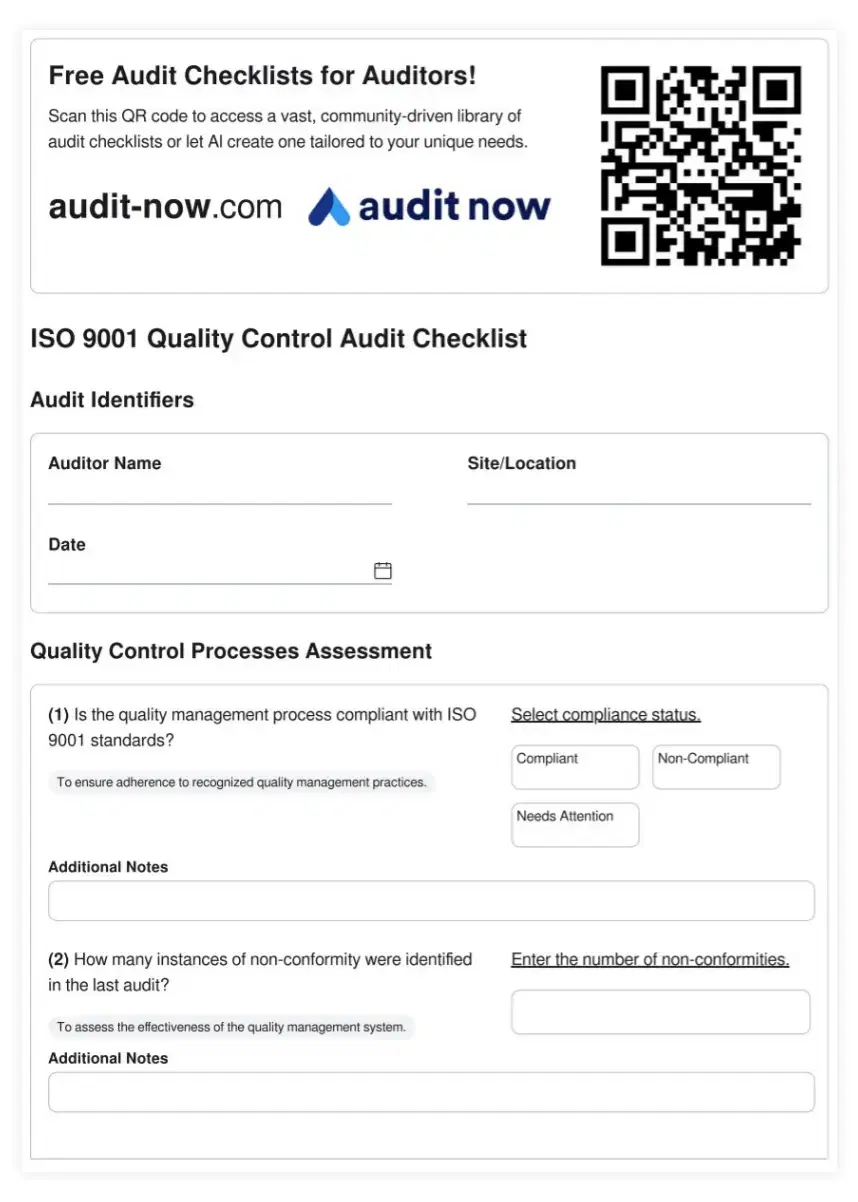ISO 28000: Safeguarding Your Supply Chain Security

Featured Checklist

ISO 28000 Supply Chain Security Management System Audit Checklist
The ISO 28000 Supply Chain Security Management System Audit Checklist is an essential tool for logistics and transportation companies seeking to enhance their security practices and comply with international standards. This comprehensive checklist addresses critical aspects of supply chain security, helping organizations identify vulnerabilities, mitigate risks, and improve overall operational efficiency. By implementing this checklist, businesses can ensure they meet the requirements of ISO 28000, protect their assets, and maintain a secure and resilient supply chain in an increasingly complex global marketplace.
Understanding ISO 28000: The Cornerstone of Supply Chain Security
ISO 28000 is the international standard that sets the framework for implementing a robust supply chain security management system. This comprehensive standard helps organizations identify security risks, implement controls, and manage potential threats to their supply chain operations. By adopting ISO 28000, businesses can enhance their security posture, improve operational efficiency, and build trust with stakeholders.
Key Benefits of Implementing ISO 28000
Implementing ISO 28000 offers numerous advantages for organizations across various industries. It helps in identifying and mitigating security risks, improving overall supply chain performance, and enhancing customer confidence. The standard also promotes a culture of continuous improvement, ensuring that security measures evolve with changing threats and business landscapes. Moreover, ISO 28000 certification can provide a competitive edge in the global marketplace, demonstrating a commitment to security and reliability.
Core Components of ISO 28000
ISO 28000 is built on the Plan-Do-Check-Act (PDCA) cycle, ensuring a systematic approach to supply chain security management. The standard encompasses several key elements, including security policy development, risk assessment and management, operational planning and control, performance evaluation, and continual improvement. By addressing these core components, organizations can create a comprehensive security management system that aligns with their specific needs and objectives.
Implementing ISO 28000: A Step-by-Step Approach
Successful implementation of ISO 28000 requires a structured approach. Organizations should start by conducting a thorough gap analysis to identify areas that need improvement. Next, they should develop a security policy and objectives, perform a comprehensive risk assessment, and implement necessary controls. Regular internal audits, management reviews, and continuous monitoring are essential to maintain the effectiveness of the system. Engaging employees at all levels and fostering a security-conscious culture are crucial for the long-term success of ISO 28000 implementation.
Core Audit Requirements & Importance of Checklists in ISO 28000 Auditing
Auditing plays a vital role in ensuring compliance with ISO 28000 and driving continuous improvement. Core audit requirements include verifying the organization's security policy, assessing risk management processes, evaluating operational controls, and reviewing performance monitoring mechanisms. Checklists are invaluable tools in the auditing process, providing a structured approach to assess compliance and identify areas for improvement. They help ensure consistency, completeness, and efficiency in audits, making it easier to track progress and maintain compliance over time.
Key elements of ISO 28000 audit checklists:
- Security policy and objectives
- Risk assessment and management processes
- Operational planning and control measures
- Resource management and competence
- Emergency preparedness and response
- Performance evaluation and continual improvement
Using comprehensive checklists during ISO 28000 audits helps organizations maintain a systematic approach to security management, identify potential gaps, and drive continuous improvement in their supply chain security practices.
Discover Checklists
Discover ready-made checklists aligning with the requirements of ISO 28000.
Discover Checklists
Overcoming Challenges in ISO 28000 Implementation
While implementing ISO 28000 offers significant benefits, organizations may face challenges during the process. Common hurdles include resistance to change, resource constraints, and difficulty in integrating security measures across complex supply chains. To overcome these challenges, organizations should focus on clear communication, stakeholder engagement, and phased implementation. Providing adequate training and resources, leveraging technology solutions, and fostering a culture of security awareness can help smooth the transition and ensure successful adoption of ISO 28000 principles.
ISO 28000 and Other Management Systems: Integration and Synergies
ISO 28000 is designed to be compatible with other management system standards, such as ISO 9001 (Quality Management) and ISO 27001 (Information Security Management). This compatibility allows organizations to integrate ISO 28000 with existing management systems, creating a more holistic approach to risk management and operational excellence. By aligning these standards, businesses can streamline processes, reduce duplication of efforts, and create a more robust overall management framework that addresses quality, security, and supply chain risks in a cohesive manner.
The Future of Supply Chain Security: Trends and Innovations
As supply chains become increasingly complex and global, the importance of robust security measures continues to grow. Emerging technologies such as blockchain, artificial intelligence, and Internet of Things (IoT) are reshaping supply chain security practices. These innovations offer new ways to enhance traceability, improve real-time monitoring, and strengthen overall security posture. Organizations implementing ISO 28000 should stay abreast of these technological advancements and consider how they can be leveraged to further enhance their supply chain security management systems.
In conclusion, ISO 28000 provides a comprehensive framework for organizations to effectively manage and improve their supply chain security. By implementing this standard, businesses can enhance their resilience, protect their assets, and build trust with stakeholders. As supply chain risks continue to evolve, ISO 28000 offers a flexible and adaptable approach to security management, ensuring that organizations can stay ahead of emerging threats and maintain a secure, efficient supply chain in an increasingly complex global business environment.
For more information on ISO 28000 implementation and auditing, explore our audit templates or use our AI-powered checklist generator to create customized audit checklists tailored to your organization's specific needs.